When Sleep is a Problem

With the sun about to set, a small group of insomniacs, somnambulists, and incessant snorers gathered over an autumnal dinner to delve into the mysteries of sleep—and sleeplessness.
Serving as their guide through this dreamscape: Nancy Collop, professor of medicine in pulmonary, allergy, and critical care medicine, sleep medicine, and neurology, and director of the Emory Sleep Center.
The Emory Sleep Center, at Executive Park in Brookhaven, has its own sleep lab with eight bedrooms, an interdisciplinary team of 12 providers, including sleep specialists, and its own medical equipment company that provides CPAP (continuous positive airway pressure) devices.
It also offers home testing—an increasingly popular option for those who wish to be tested for sleep disorders from the comfort of their own beds.
“Last year, we did more than 1,900 lab studies and 2,200 home studies,” says Collop. “It was the first year we did more sleep studies at home than in the lab.”
Emory also has two other clinics with sleep clinics embedded: the Pulmonary Medicine Department at Emory Midtown Hospital and Emory Saint Joseph’s Hospital.
Before Collop’s main course had arrived, our five panelists were already peppering her with questions. Emory Medicine’s Dinner with a Doctor was off to a rousing start.
“If you have sleep apnea should you take sleep aids?” a panelist asks.
“If you’re treating your sleep apnea, it’s probably okay,” she replied. “Most prescription sleeping pills—Ambien, Lunesta—and over-the-counter sleep aids are pretty safe, if you’re using a CPAP or other treatment.”
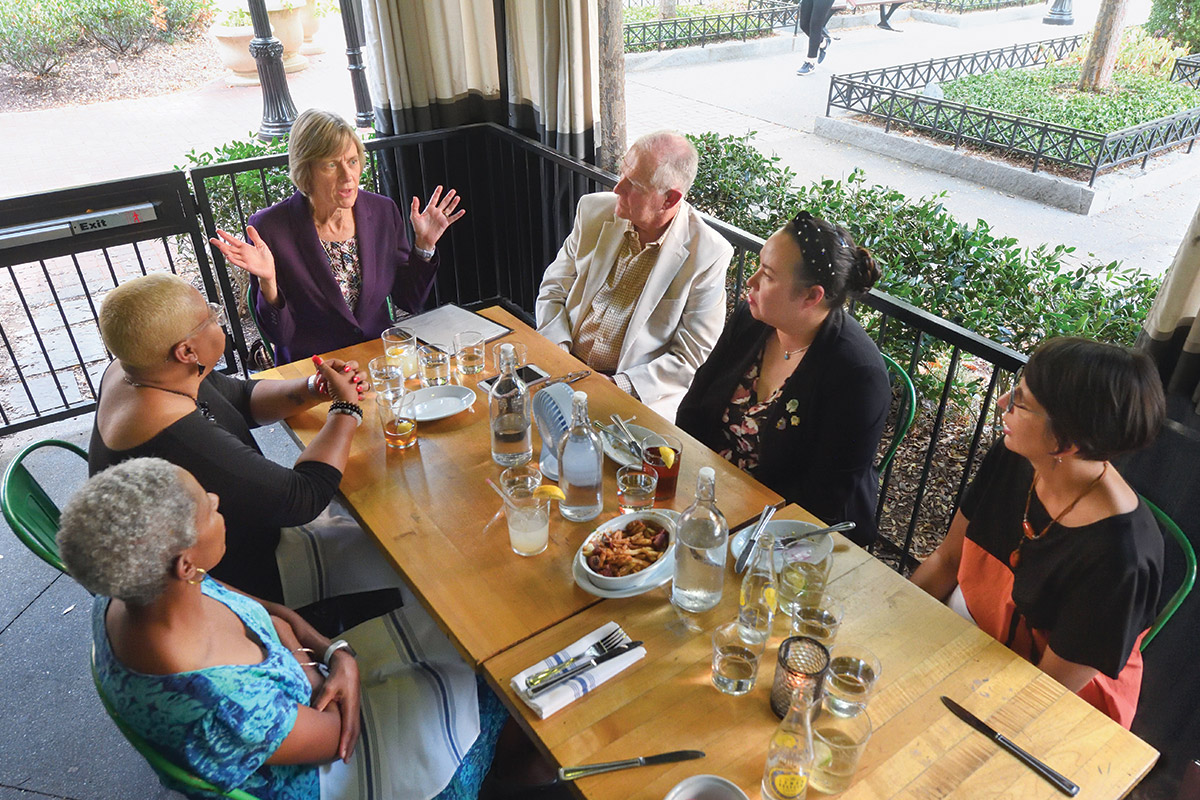
Caution should be used with drugs that are not sleep aids but are sometimes used for sleep, like benzodiazepines such as Valium and Xanax, or opioids prescribed after surgery may suppress respiration, Collop says.
“But again, as long as you are using a CPAP machine, you should be OK,” she says. “Some patients use sleep aids to help get used to using a CPAP, to overcome their anxiety.”
“Can you describe what sleep apnea is?” a panelist asks.
“Yes, I do that every day,” Collop says. “Two things usually happen when you go to sleep. You lie down and your muscles relax. Obstructive sleep apnea, the most common, involves your air vent—your throat. When you go to sleep, the muscles in your throat relax behind the hard palate, from the soft palate on down, that area is collapsible.”
When tissues in your throat (and sometimes your nose) start to vibrate, you are snoring. This may or may not mean you have sleep apnea. “I like to say, not everybody who snores has sleep apnea, but almost everybody who has sleep apnea snores,” she says.
Collop uses the analogy of a straw: “As your air vent gets narrower, or your throat muscles start to soften and collapse, you have to work harder to breathe. Sometimes that airway closes completely and your brain says, ‘Hey, there’s a problem here,’ and wakes you up. As soon as you wake up, the muscles tighten and the problem is gone.”
The upshot: most people who have sleep apnea don’t know they have it. “All they know is their partner is nudging them, complaining about their snoring, or they just don’t feel like their sleep is restorative,” she says. “They may have a dry mouth in the morning, from trying to get air. Occasionally, they may dream about drowning. It is not such a silent disease for the person sleeping beside them, however.”
Sleep Apnea: More Than Just Snoring
In central sleep apnea as opposed to obstructive apnea, the brain fails to send signals to the diaphragm to breathe during sleep, and the sleeper will have breathing pauses. About 10 percent of people with sleep apnea have this type, Collop estimates.
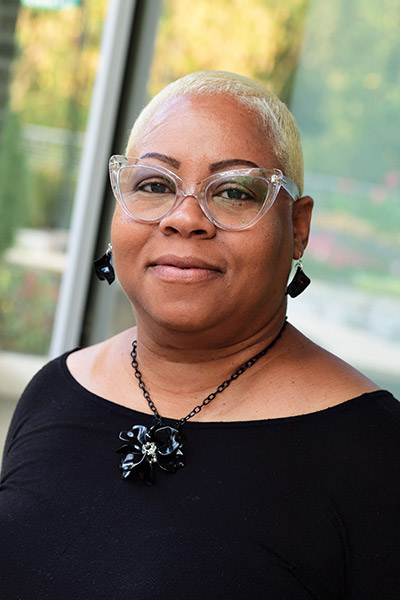
Tracey Dodson, Graphic Designer
“I wake up occasionally gasping for breath. Is that sleep apnea?” asks a panelist.
It can be, says Collop, but apnea must be diagnosed through a sleep test, either in the lab or at home. A patient must have more than five breathing/sleep interruptions per hour before they can be classified as having sleep apnea.
Sleep apnea can be damaging to one’s health, she says, especially in regard to feelings of fatigue and an increased risk of hypertension and/or morning strokes.
“Men get sleep apnea more than women, but women catch up after menopause,” Collop says. “Most people present in their 40s and 50s, although I saw an 86-year-old today. We treat more for the cardiovascular benefits when patients are younger; it’s a quality of life issue for the elderly.”
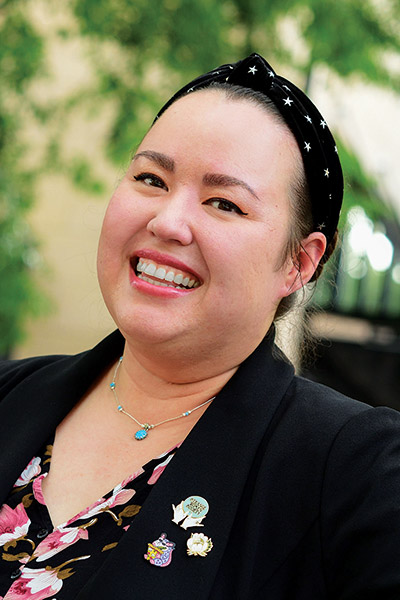
Linda Dobson, graphic designer
“My friend says I snore,” says a panelist. “She recorded me, and it was like you went home and recorded my dad or my brothers. Is sleep apnea hereditary? Is it weight related?”
If you have a first-degree relative with it, you are four times more likely to have sleep apnea, says Collop. “And 70 percent of people who have it are overweight, but you don’t have to be overweight to have it. Skinny people can have it.”
The conversation moved to CPAPs, with a few panelists saying they tried but couldn’t get used to them. “I couldn’t do the CPAP mask over my nose and mouth at the same time,” said one.
Collop urged her to try again with one of the newer machines. “The CPAP works by providing positive airway pressure—all it does is blow air in to keep the airway open. That hasn’t changed since 1981,” she says. “But the machines have gotten smaller, quieter, and less troublesome. Almost all have humidification systems and you can adjust the temperature of the air and the humidity.”
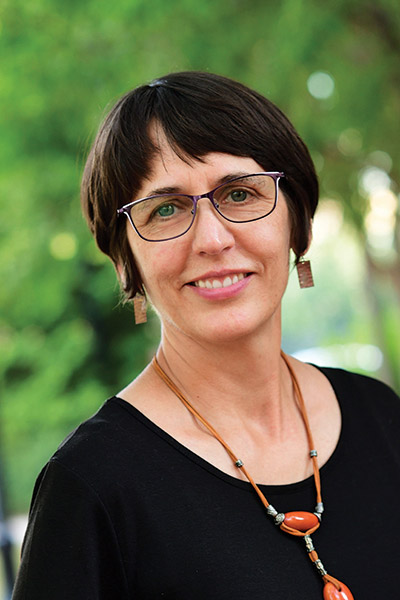
Elizabeth Hautau Karp, artist, designer
Today, there also are many different options for CPAP masks—face masks, nasal masks, special pillows, “you name it,” says Collop
“It used to be, say, 10 years ago, everyone had to have a sleep study without the CPAP and then another sleep study with a CPAP, so it could be adjusted correctly,” she says. “Now, APAPs (auto-titrating positive airway pressure machines) are auto adjusting. The sensor monitors airflow and senses if you’re having interruptions. If your breathing stabilizes, it sets itself on the lowest air pressure needed. The machines all have sophisticated software programs and can tell if the mask fits well, how it’s working, and the time of day you’re using it. We have many patients who never set foot in a sleep lab at all.”
A panelist says he has had a CPAP for a decade and it “works like a charm, but I would dump it tomorrow if you gave me something better, such as a surgical solution.”
One surgery that is fairly new, says Collop, involves implanting a hypoglossal nerve stimulator, which is like a pacemaker for your tongue. “Some people have a fantastic response, but for others it doesn’t work at all,” she says.
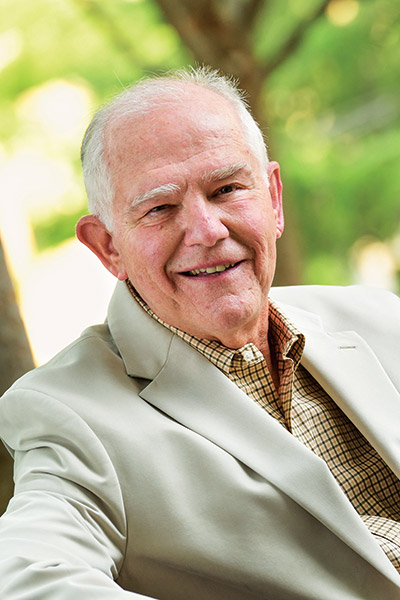
Mike King, retired journalist
Sleep specialists can do a test that shows whether an apnea patient would be a good candidate for the surgery by sedating them with medications that simulate sleep in a supervised setting and observing specifically how their airway collapses when they sleep.
Hello Darkness, My Old Friend
Panelists shared a variety of medications they have tried, or are currently using, to fall or stay asleep: Gabapentin, a seizure drug sometimes used for pain control or restless legs syndrome (RLS), and Mirapex (used for Parkinson’s and RLS, but with a side effect of sleepiness), a host of hypnotics (like Ambien and Lunesta), benzodiazepines (like Xanax and Klonopin), antidepressants (like trazodone), and over-the-counter medications and herbs, such as ZZZquil, Benadryl, Melatonin, and Valerian root.
“It seems that for insomnia, there are mostly hypnotics. Anything better coming down the pike?” asked a panelist.
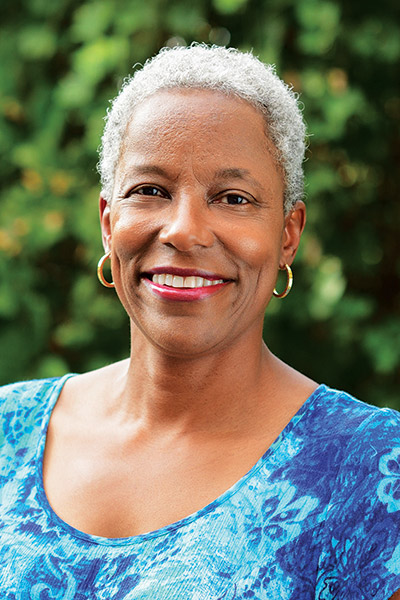
Lisa Smith, gift/estate planner
Sleep aids can lose their effectiveness over time, Collop says. “And no one should be taking medication every night to fall asleep.”
Additionally, “a lot of the medications for RLS, if people use them night after night, they develop augmentation syndrome, which means they have more symptoms earlier in the day,” Collop says.
Restless leg syndrome causes an uncontrollable urge to move one’s legs, typically
in the evening or nighttime when sitting or lying down.
“You mentioned that one should not be on sleep medication for a long period of time,” one panelist asks. “What is considered a long period of time?”
“That depends,” answers Collop. “Are you taking it intermittently or every day?”
Sleep specialists, she says, are moving toward behavioral therapy to readjust people’s sleep habits, which is proving more valuable long-term than sleep aids that may have diminishing effects over time.
Cognitive behavioral therapy for chronic insomnia is time intensive, however, and sometimes insurance won’t reimburse. In response, smart phone apps and internet-based programs have been developed that take people through a similar program, although “face to face is, of course, probably better,” Collop says
Many of the programs focus on mindfulness and relaxation. “What happens with people who have insomnia is that it becomes a self-fulfilling prophecy,” she says. “Am I going to sleep tonight? There’s so much anxiety that it builds upon itself and makes it even harder. You spend a lot of time in bed but not sleeping.”
Stimulus control is important, says Collop. “If you wake up in the middle of the night, get out of bed and go do something that’s relaxing, don’t do your taxes or read email. Do something in a low, dim-light environment. Try to associate being in bed with being asleep.”
She encouraged patients to keep a sleep diary for a week or two to get an accurate picture of what specifically is going on with them. “There are two things that determine sleep: how long you’ve been awake and your circadian rhythm,” Collop says. “Even if you stay awake all night, during certain times of day you can’t stay awake to save your life, but other times are not so bad.”
“I can always fall asleep, it’s the waking up three to four hours in,” says another panelist.
“There is an old theory of two sleep periods, early and late sleep,” Collop says. “In the past, it was thought that people would sleep for a while, get up and do stuff, then go back to sleep. Nowadays, we (as a society) believe you should sleep through the night,” Collop says.
Waking in the middle of the night gets to be a habit, she says, so sleep specialists often use sleep restriction to break that cycle, so you don’t always wake up at the same time.
“I’m doing that right now,” says a panelist. “I am supposed to not go to sleep until 1:30 a.m. and get up at 7.”
Herbal and Hormonal Remedies
Several of the panelists say they take melatonin before bed.
“Melatonin relaxes me but doesn’t keep me asleep,” says one panelist.
“Have you tried the kind with 5HTP in it? That works well for me,” says another.
Collop says melatonin is naturally produced in our bodies and its production is driven by our circadian rhythms—it is released when the lights go off, due to receptors in the back of the eye that sense darkness.
“It starts to be released in early evening, and peaks at 2 to 3 a.m,” she says. “Although people do have different circadian rhythms…there really are night owls and morning larks. Sometimes we use melatonin to readjust circadian rhythms. It’s a great thing for jet lag, but not so much for insomnia.”
While melatonin is generally very safe and not going to hurt you, said Collop, in a study of different melatonin preparations the ingredients varied greatly. Some even had serotonin in them, “which is not good if you take antidepressants.”
“Valerian root works really well for me,” says a panelist. “I make it in tea.”
“What about CBD oil?” asks a panelist.
Collop said there are no definitive clinical studies on CBD oil as a sleep aid. “I can’t tell you how many patients ask me about that,” she says.
“There is a bit of data on how THC (the psychoactive ingredient in cannabis, which is not in CBD oil) impacts sleep,” she says. “It seems to be a very individual response.”
Lullaby, and Good Night
As evening turned to night, the panelists began asking an array of questions on topics from reading in bed to having a nightcap.
“My sleep has been poor since I’ve gotten to ‘middle age,’ is that due to menopause?” asked a panelist.
“It’s probably not menopause, although night sweats and hot flashes can wake you up,” says Collop. “As we age, people in general tend to have more fragmented sleep.”
“How much sleep are you supposed to get, and what are the stages?” asks a panelist.
In the span of a night, says Collop, sleepers usually get stage or level 1, non-REM, 5–10 percent; non-REM stage 2, 50–60 percent—most of night; non-REM stage 3, 10–15 percent; REM remains stable, about 20–25 percent, every 90–100 minutes. Your first REM period is shortest, it occurs about 90 minutes in. The longest REM period is usually in the early morning. Your deep sleep (NREM 3) generally occurs during the first third of the night.”
“What about sleepwalking?” People who sleepwalk—kids and even some adults—typically do so during the deep part of non- REM sleep, Collop says. “People with a history of parasomnias shouldn’t take Ambien. There is a warning about it. This happens in non-REM level 3 sleep.”
“Is there such a thing as a power nap?” asks a panelist.
“Sure, but you don’t want to take a nap that gets you into deep sleep, it’s hard to awake from it,” Collop says. “Restrict naps to 30 minutes or less. Most people won’t hit REM during a nap, but if you’re sleep deprived, you tend to go right into REM.”
“What about reading in bed?”
Reading a book is fine, says Collop.
“How about on a Kindle?”
“If you use the low light, or blue-light blocking,” she says. “Blue light from electronic devices is the most stimulating light.”
“A glass of wine?”
“Don’t use alcohol to sleep, even though it is the most common hypnotic used,” Collop says. “Alcohol helps you go to sleep, but once it’s out of your system your sleep is worse. You tend to wake up, dehydrated. And it can definitely make sleep apnea worse. Also, avoid caffeine, probably after 3 in the afternoon, although it affects everyone differently.”
Sleep problems are not rare, Collop assures the panelists.
In the US, 70 percent of adults report that they get insufficient sleep at least one night a month, and 11 percent report insufficient sleep every night.
The CDC estimates that one in three adults don’t get enough sleep, which it counts as seven or more hours.
Incorporating exercise into your life, although not right before bed, will help with sleep, says Collop, but there is no medication or drug that will give you completely natural, restorative, full-cycled sleep.
“So, it seems like it’s time for bed,” says one panelist, as darkness closes in around the diners.
And with that, everyone was off in search of a common, elusive goal: a good, solid night’s slumber.



